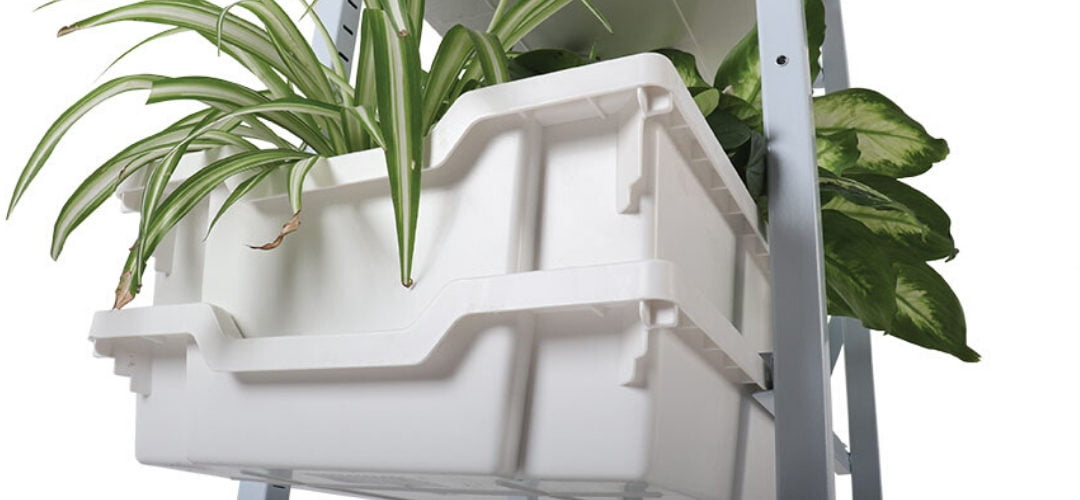The impact of carbon dioxide or CO2 build up in the classroom is often overlooked but it certainly should not be underestimated. In enclosed spaces, such as classrooms, levels of CO2 build up during the day, especially if air circulation is poor. This reduces oxygen levels and impairs concentration, engagement and ultimately learning. Students (and teachers) will start to feel drowsy and may even experience headaches and nausea which can lead to absenteeism.
Whilst developing the Learnometer, Professor Stephen Heppell found that above as little as 1000 parts per million, CO2 will already be inducing sleepiness and nausea. However, rising CO2 can be tackled head on with simple actions like opening a window and internal doors to improve air circulation.
Another way to reduce CO2 levels in the classroom is to bring in the plants. Through the process of photosynthesis, plants absorb CO2 during the day and release oxygen, thus improving air quality. Prof. Heppell encourages ‘Bring Your Own Plant’ or BYOP schemes. Children bring their own plant to school, name it and look after it, fostering a nurturing habit, a greater interest in the natural world and in some cases a drop in absenteeism. Children want to come in to see how their plant is doing. Teachers can use the plants as a warm up to science activities or art projects, developing essential STEAM experiences.
When plants are kept in white pots, more light is reflected back into the learning space too and better light (lux) levels mean more alert students. There is plenty of anecdotal evidence to suggest that plants also have a beneficial effect on mental health and wellbeing. As students adapt to different ways of learning post Covid-19 lockdown, anything that reduces stress levels can only be a good thing.
Gratnells Plant Tower and Planter Trays from Gratnells.
With this in mind, Gratnells has just launched the Plant Tower. It’s a tall, single width trolley with a compact footprint that is also a vertical planter. It utilises a set of white Gratnells trays – deep for planting and shallow as a drip tray – to reflect light back into the environment. Once planted, the trays usually stay in place but as the trolley may be moved to benefit from optimum sunlight, the frame has an antimicrobial coating that is effective against a wide range of bacteria, fungi and viruses.
Depending on the plants chosen, the deep trays can be heavily planted, helping to decrease CO2 levels and improve learning. The towers can act as a natural ‘soft’ screen to help with social distancing. They introduce a biophilic element into the classroom and can make a positive impact to wellbeing.
The Plant Tower set includes an easy-to-assemble frame on castors and a full set of trays. Our YouTube video shows how to easily prepare the trays for planting by creating drainage holes and in case you were wondering, here’s a list of some of the best oxygenating plants for the classroom (in no particular order):
- Ivy
- Fern
- Aloe vera
- Spider plant
- Money plant
- Rubber plant

